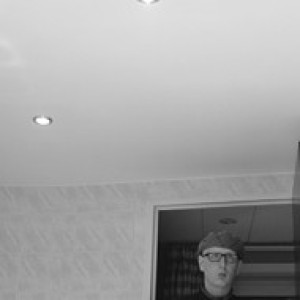Conceptual Deviance
I was thrown a curve ball today. You see.... I like to define things, principles and problems and then explore them. My head is known to wander off on tangents unless I set it constraints to work within. Like most of us, I imagine.
A few weeks ago I was listening to the Reith Lectures, delivered by Grayson Perry. He was attempting to define and discuss art. One of his tests was that a work "must be conceived as art before it can be considered to be art". I liked this test because it's so simple and initially made sense. A question often asked in the academic study of my own profession, sports coaching is "is coaching art or science?". When asked this question, my preferred response would be " who gives a shite" but this is a professionally untenable one.
Fortunately, I feel well equipped to talk the talk. I usually get the nodding " hmmmm.....interesting" when I've convincingly presented my arguments on the subject to an academic who probably hasn't got a clue what I'm talking about. Fortunately, Perry had given me a get out by presenting his test.
But like most things, when you fell you have got to grips with it, it changes. I watched Imagine, Alan Yentob's excellent art documentary on The Outsiders, an art 'movement' that artists can't consciously join because they are fruit bats. What they do isn't rationally conceived but is rather them expressing their 'faulty wiring' in a visual form. The end result often looks like complex conceptual art, the type of which is exhibited in the world's finest contemporary art galleries. What's more, the artists tend not to be directly involved in the art merry-go-round of dealers, openings or networking events and have not gone to art school.
For me, their work is important philosophically. That's because these artists are not constrained by convention or commercialism. Rather, their work is art in it's truest form, passing the important test of being 'original'. Their originality stems from not being part of any world that most of us would recognise as normal. Rules and conventions in psychology allow us to scratch the surface when trying to understand behaviour; to put things in a box. But art and human expression allows us to see human sub-plots and to break the scratched surface. Scientists tend to limit their thinking by dismissing things they can't explain or understand and term it as invalid.
When doing my Ph.D. (which was science related) I fought convention and tried to do things my way, with almost disastrous results. On reflection, that's because I didn't understand the rules or how to use them to my advantage. The whole process literally broke me. However, those who follow the path of least resistance, accepting the rules as law without question probably do not have such rich learning experiences.
My guess is that the left hemisphere of my brain is the dominant one. I like to observe, to read and make logical sense of things. People who are 'left dominant' tend to be labelled as non-creative. But I'm starting to think that this is a fallacy, albeit from a personal perspective. Right dominant Artistic types tend to have more random brain wiring resulting in the linking of disparate neurones and 'creative' thoughts. But by having an open mind, by exploring things from a variety of perspectives or simply communicating with people outside a regular circle may just result in similar creativity, even for 'non-creatives'.
A love of art, a fascination in observing things and a scientific training means that I often link disparate subjects together. Whether these thoughts and conclusions are original or not is another thing entirely. After all, we only know what we know.

Comments
Sign in or get an account to comment.


